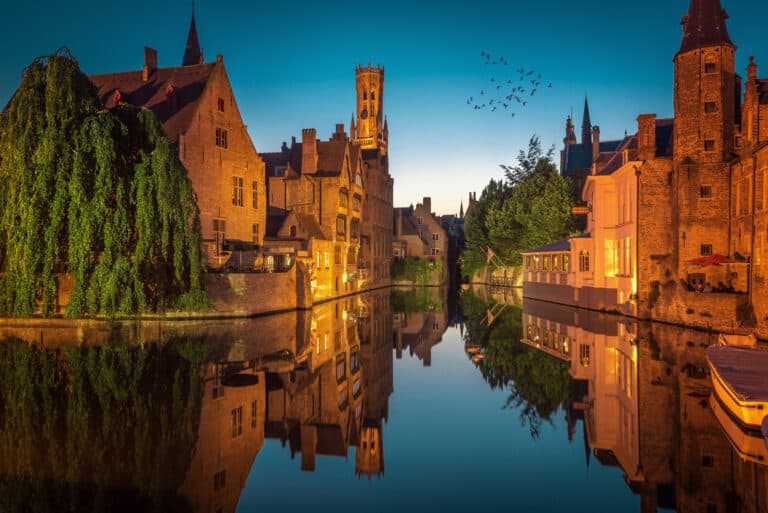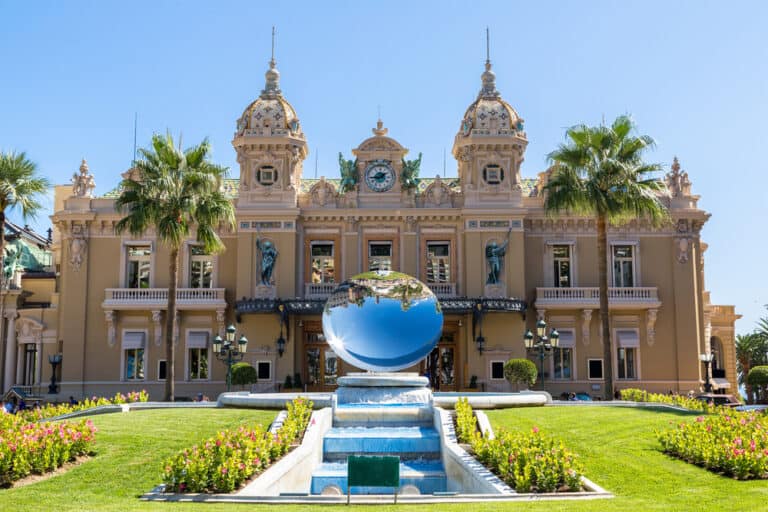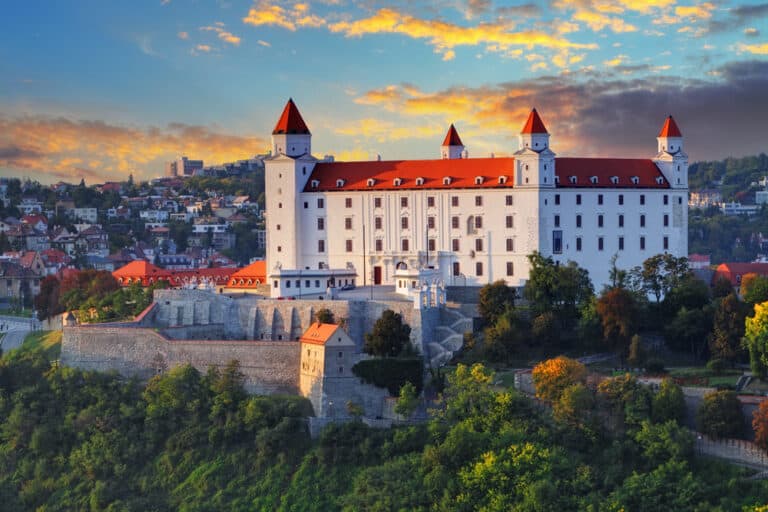Short breaks to Marrakech: visiting the Bahia Palace
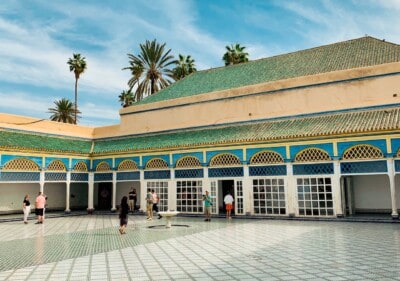
By Emma Marshall and Nick Warburton
Morocco’s top tourist destination Marrakech offers a fascinating blend of the exotic and the strangely familiar. Perhaps this is why short breaks to Marrakech are so popular.
You wade through the souks, passing the traders beckoning you to purchase their beautifully designed local crafts. There are elaborate rugs, pots and vases; piles of colourful, perfumed soaps; and eye-catching lamps. You are unmistakably in North Africa.
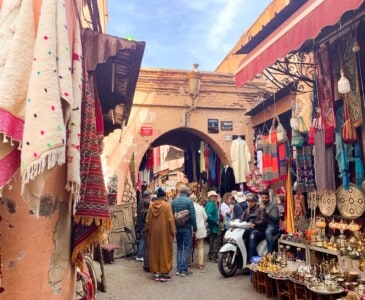
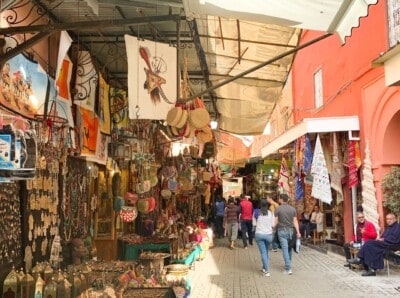
Yet for anyone who has visited southern Spain with its Moorish architecture – allegedly, the bell tower in Seville cathedral was based on Marrakech’s Koutoubia Mosque’s minaret – you will also feel that you are in familiar territory.
This post contains affiliate links
Short breaks to Marrakech: things to do
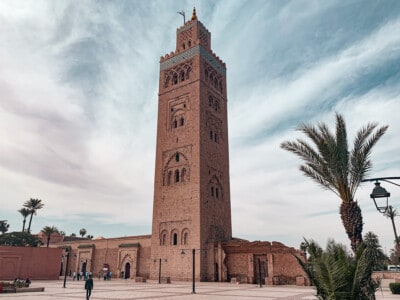
Marrakech has a generous sprinkling of things to see and do over a long weekend or short break.
My forthcoming post will outline some of these, which I’d definitely say should include a visit to a traditional Moroccan hammam (spa).
Alternatively, there are a range of organised tours that you can book to help you see the sights. These include the tours offered here.
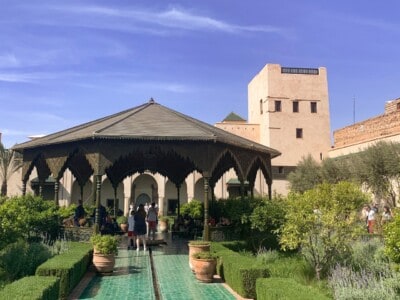
Short breaks to Marrakech: The Bahia Palace
One of the top must-see sights for those planning short breaks to Marrakech is the charming Bahia Palace.
To us, this felt slightly reminiscent of the interior of the Alhambra in Granada (see my earlier post for top tips for visiting the Alhambra).
This popular landmark is, however, much smaller and, surprisingly, is a relatively modern construction.
What is the Bahia Palace?
The Bahia Palace is one of Morocco’s royal palaces.
And although it might not look like one from the outside entrance (it seems fairly nondescript as you first arrive), the inside is certainly befitting of a royal palace.
It was built in the second half of the 19th century by Si Moussa, the Sultan’s grand vizier (the chief officer of state), and named after one of his wives, (‘Bahia’ apparently means ‘beautiful’ or ‘brilliance’ in Arabic). The Bahia Palace is one of Marrakech’s most impressive historical sites.
Apparently, when the palace was built in the 19th century, the cream of Morocco’s artisans were employed to undertake the painstaking work.
This is evident when you visit as you can marvel at elaborately painted ceilings, intricately tiled walls and woven silk panels.
There are also finely crafted cedar wood carvings, eye-catching stained-glass windows and doorways, and striking water features.
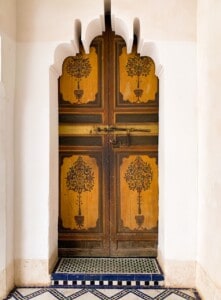
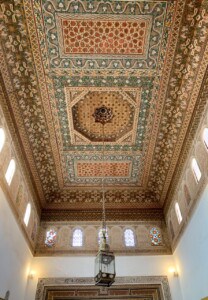
Si Moussa’s son Abu ‘Bou’ Ahmed, who became grand vizier just before the turn of the 20th century, carried on where his father had begun. He further embellished the spectacularly lavish decorations that adorn the rooms, riads and courtyards across the palace’s eight hectare site.
The palace was then extensively restored at the start of the 21st century. This restoration work further enhances the original design.
Where is Marrakech’s Bahia Palace?
The Bahia Palace is located on the southern edge of Marrakech’s Medina. It is a relatively short distance from the city’s vast central square (Jemaa El Fna). This square is a place that you will almost definitely visit at some point during your trip to Marrakech.
There are several walking routes to the palace gates but it shouldn’t take you more than 15-20 minutes to reach it from the square.
Marrakech’s hop on/ hop off bus also stops at the Palace.
What is there to see in the Bahia Palace?
The palace comprises four main sections – a small riad; a small (inner) courtyard, a grand courtyard at the back; and a grand riad. These were all built during different stages of the palace’s construction. In total, the palace apparently comprises 160 rooms, riads and courtyards.
It’s not possible to visit all of these rooms, but what you are able to access is absolutely stunning. In some cases, you will be left quite lost for words.
Your tour will direct you through a labyrinth of rooms and courtyards. Each one offers up a cornucopia of exquisite designs reflecting both Andalusian and Moorish influences.

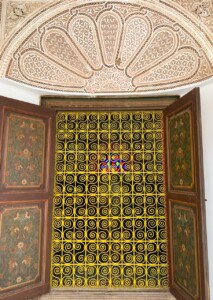
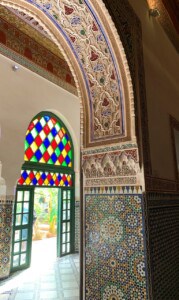
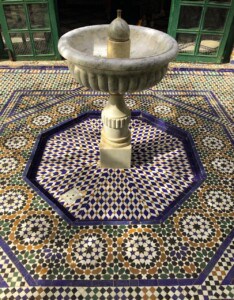
The small riad
The tour starts with the small riad. This is built around a small, square garden and features a mix of tropical plants, including some orange trees.
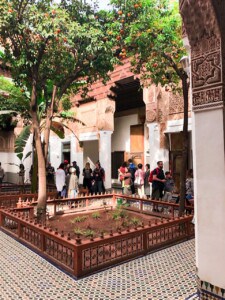
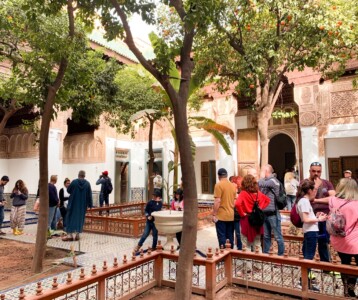
It’s quite a confined space, so we’d recommend you get here early. That way you can marvel at its splendour without having to wait for the hordes of tour groups to pass through and spoil your photos.
You can also purchase skip the line tickets in advance if you wish to do so.
The inner courtyard
As you move on, you pass through a foyer that leads you to the original palace’s inner courtyard. Don’t miss the incredible mural that covers the foyer’s ceiling as you walk through.

Once you enter the courtyard, the first thing you’ll notice is a fountain standing at its centre.
Moving closer, it’s hard to miss the stunningly beautiful mosaic floor tiles. This is a feature that is common to Morocco and one which you’ll see more of throughout the palace grounds.
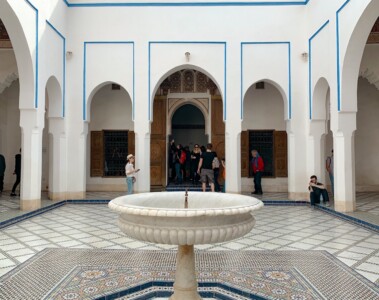
The grand courtyard
The small courtyard’s minimalist designs – the white walls lining its sides are only modestly decorated – doesn’t prepare you for the palace’s showpiece.
This is the breathtakingly beautiful large courtyard, complete with its expansive marble floor, water features, dazzling tiles and beautiful mosaics.
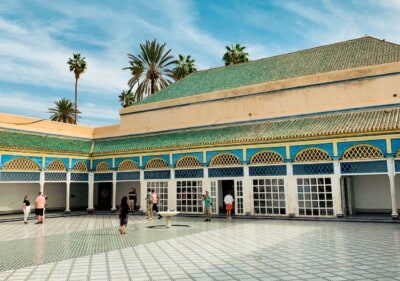
Commonly known as the Court of Honour, the marble floored expanse is roughly 50 by 30 metres. But these impressive proportions seem irrelevant as you stand at each corner and soak in its geometric beauty.
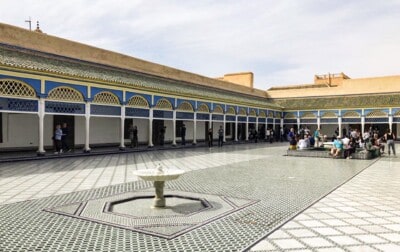
Apparently this part of the palace was used to house the grand vizier’s wives and concubines. There is also a peaceful, well-shaded landscaped garden next to it (the grand riad).
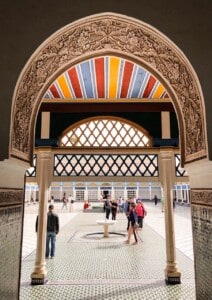
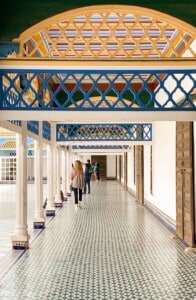
Again, getting here early will help you to avoid the crowds and capture the serenity of your surroundings.
The grand riad
Moving on, you’ll come to the grand riad. Dating from the Si Moussa period, this comprises the oldest part of the Bahia Palace.
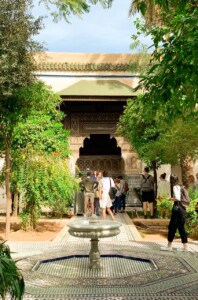
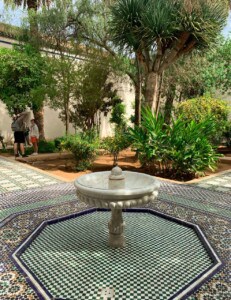
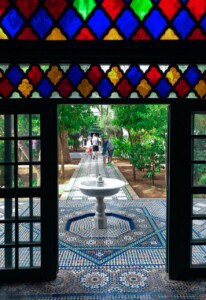
Like other areas in the palace, the interior designs of the rooms off of the grand riad are exquisite. One of the most striking features is the stained glass windows that project multi-coloured light on to the floor.
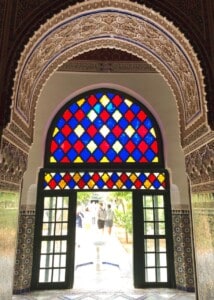
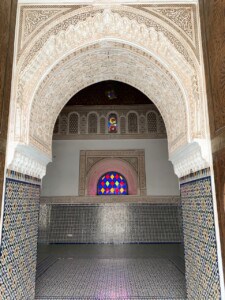
How much does it cost to enter the Bahia Palace?
When we visited in early 2020, it cost 70 dirhams (about seven euros) to enter the palace. You can also visit as part of an organised tour.
How long should I devote to sightseeing in the Bahia Palace?
As the Bahia Palace draws large crowds – there was a steady stream of tour groups when we visited – it’s advisable to arrive early. You can also opt to buy a skip the line ticket to help speed things up if time is short.
The palace is a photographer’s dream so capturing the lavish Andalusian and Moroccan architecture when the grounds are virtually empty is highly recommended.
You only need a couple of hours here, so this could be either your morning or afternoon sightseeing activity.
When is the Bahia Palace open?
The palace is open daily from 8am to 5pm but is closed for religious holidays.
More inspiration for short breaks
If you’ve enjoyed a trip to Marrakech, you might also find some of my other posts – on shorts breaks to Europe – of interest:
- A virtual tour of Zurich: how to experience this wonderful city from home
- A weekend in Lyon France
- A Sound of Music tour on a sightseeing trip to Salzburg in Austria
- A short break in Corfu Town, Greece
For more ideas, visit my website.
Short breaks to Marrakech: Pin it!
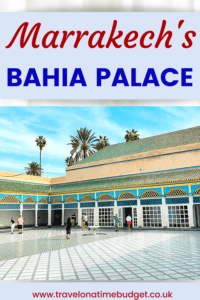
Written jointly by Emma Marshall and Nick Warburton


